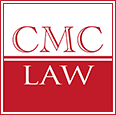Chapter 13 Bankruptcy Plan & Petition
Chapter 13 bankruptcy is a form of debt relief that allows you to make reduced payments to your creditors over time. If you meet the income and debt limits to qualify for this plan, one of your first steps is to file a Chapter 13 Plan.
As your Chapter 13 attorney will explain, this document outlines the payment amount you will make to each creditor every month as well as the total amount of funds the bankruptcy court will disburse on your behalf. A Chapter 13 Bankruptcy Plan will typically cover at least three years but no more than five years. The specific time depends on the amount of available income you have to put towards your debts.
How a Bankruptcy Trustee Prioritizes Your Creditors
The bankruptcy trustee will review your written repayment plan and either approve it or request changes. Chapter 13 bankruptcy law ranks creditors to determine who receives payment first and in what amount. You may have several types of creditors in your bankruptcy petition such as secured, unsecured, and priority creditors.
Typically, secured creditors receive highest priority for repayment when a debtor files for Chapter 13 bankruptcy. Examples of secured creditors are the financial institutions that hold your mortgage and car loan. You must pay these secured creditors if you intended to keep either your home or your car.
Next in line are priority creditors. Common examples of these types of debt include past-due taxes or child support. You can no longer pay these creditors directly once you file for Chapter 13 bankruptcy and must do so through the plan.
Unsecured creditors take last priority. This would typically include those with whom you have a credit card or an outstanding medical bill. Under the Chapter 13 Plan, you will pay each creditor between 0 and 100 percent of what you owe. The bankruptcy court takes your assets and income into consideration when determining specific percentages. You cannot start following the plan until the bankruptcy court approves it. Your Chapter 13 bankruptcy attorney will assist you in putting it together.
How It Works to File a Chapter 13 Bankruptcy Petition
Similar to Chapter 7 bankruptcy, a Chapter 13 requires you to list all income, assets, debts, and liabilities. You must also answer every question in the Statement of Financial Affairs. Your pre-bankruptcy paperwork will include completing the Chapter 13 means test. The purpose of this test is to determine how much income you have available to repay your creditors.
You will not be able to file for Chapter 13 bankruptcy unless you complete both the Plan and Petition. Additionally, you should expect to spend several hours completing the Chapter 13 Petition since it is a lengthy document. However, you don’t have to worry that your creditors will see everything you listed. They will only receive a copy of the approved Chapter 13 Plan from a bankruptcy trustee. Included with that information is a schedule for the 341 Meeting. This is a mandatory meeting you must attend with representatives for your creditors.
CMC Law offers free bankruptcy evaluations. Please call us at 404-585-0040 or complete this form and a Chapter 13 bankruptcy lawyer will get back to you.
